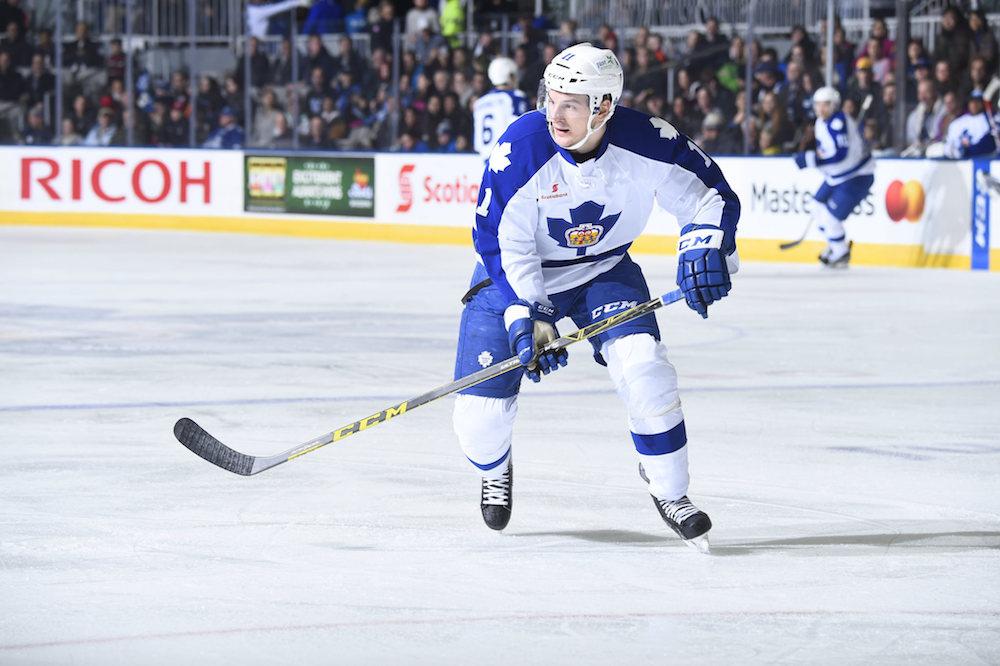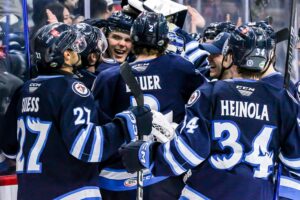By Todd Crocker | AHL On The Beat Archive
One of the great advantages of watching games on television beyond the low prices at the refrigerator concession stand is the replay. It allows you to experience what the people who are seeing it live see when they look away from the puck carrier in real time. Replays let you in on the rest of the game that players, coaches, broadcasters, media and of course the fans see when their seats are in the seats. In the more savvy rinks around the AHL, you can almost tell when you’re amongst fans that have a dump truck full of used ticket stubs. These are the fans who send a murmur through the stands about a goaltender who chops a forward rushing back to join the play from behind the net. These are the fans that register the game long battle between two opposing players that ‘suddenly’ erupts into a misconduct.
Hockey is a game that is played mostly without the puck. Not startling news for those who notice the slight lift of a stick that keeps a goal from going in, or the shoulder pressure that slows a forward through the neutral zone. Or the forward who times the change at the bench and the one who joins the rush at the exact right time. All this you see live and in person.
Coaches recognize most of the game actually happens to the rest of the bodies who aren’t dangling through the neutral zone or cutting back toward the crease with a backhand.
“There are five guys out there. Even if you have the puck, that means four other guys don’t. That means being in the right spot offensively and defensively…we focus a lot on it.” said Sheldon Keefe, the Toronto Marlies head coach, who has instilled this intensity without the disc in the varied lineups (almost 60 different players with 24 going back and forth with the big club) he has had to ice each night. He finds success follows those players who play hard no matter the circumstances, no matter their assessment of putting the puck in the net.
Zach Hyman was rewarded with a call-up to the Toronto Maple Leafs based largely on what he did when various other players were handling the puck.
“Just bumping guys to deter speed, disrupt flow…Sheldon has been consistent all year, these are the things that create chances and stop them going the other way,” said Hyman. Hyman is confident the AHL is a great teacher of that, and one of the reasons he earned the chance after the trade deadline to play in the NHL.
Those who play, or coach, or just spend Saturday mornings drinking vending machine coffee in cold rinks recognize when a a highly skilled player amongst their peers doesn’t need to think about what happens away from the puck. The skilled player has the puck a lot and can create exactly what parents and most coaches want: Goals. AHL fans almost always recognize it when a graduate of the feeder ranks thinks they can get away with that kind of play in the pros. This league is often times the first league that truly challenges those players to play well when they aren’t the spotlight player.
“Those top players come in—they’re really talented and they have played for a lot of good coaches and have been told all the right things, but sometimes you don’t have to be as committed to it (off puck play) at those other levels,” said Keefe, who, having coached in junior with the Sault St. Marie Greyhounds of the OHL, saw it first hand. “You come here, and you realize pretty quickly that if you’re not in the right position and you’re not competitive, you don’t have the puck very much.”
When you see a game on a 42-inch screen, the real time focus is almost always on the puck and who has it, because missing the goal or the save would be a major visual mistake. And it is truly about building excitement to that moment. But almost always it is someone out of frame who impacts the play with their speed, or a hit, or even a penalty. As a broadcaster, you register it, you file and then, if it becomes relevant, you relay it. There are literally thousands of small checks you make all over the ice from bench, to goalie, to players following the play to post whistle conversations and referee interactions.
“The other night I watched as Mark Arcobello took a spear in the gut and it happened away from the main follow camera,” said Bob McGill, former NHL defenseman, NHL analyst and Toronto Marlies color commentator. ” In one of those million little glances I take, behind the play, the bench, the coach, the players coming on, the ones going off, where the pass might go, who is out of position, there was this nasty penalty. We showed it on replay but there were more than a few fans who led the charge with noise about it that drew other fans to look. It’s a smart and watchful crowd at Ricoh. It was like that in Hershey when I coached there too. They know that a good bit of what’s happening, you have to be there to see.”
In Toronto, over the past four seasons, the learning curve for Sam Carrick has been something textbook-like. Junior player comes in, absorbs all that the veteran players ahead of him have to offer, puts it together to be effective every single shift. Carrick’s call-up at the end of the year was as much about him coming off injury and dominating his shifts as it was about how he has contributed offensively.
“I think it’s one of the biggest transitions from juniors to pro,” said Carrick. “Coaches rely on you for your play away from the puck. Over my four years I’ve gotten better. It does take practice. It’s about getting in a guy’s way and not letting him have speed around you.” Carrick also points out the stick isn’t in his way anymore and that he is actually using it like the tool it is. “One of my flaws early on was I’d go to hit a guy and my stick would be be up, I’m working on making sure my stick is down when I’m thinking about hitting because it can take away the play.”
This spring the AHL playoffs will come to 16 rinks and when you’re there live you’ll get to see battles in front of the net while a forward works with the puck in the corner. When you sit in the stands, you’ll see the bench slumped forward or tense with enthusiasm as play carries into the final moments. You’ll see coaches pacing, players on the bench discussing, back checks that create odd man rushes, goalies who cheat to get off for the extra attacker, among a thousand other little things. All of those little moments are worth the price of a ticket and maybe a bag of concession popcorn. If you think of it that way, the plays you end up seeing on the highlights are free.






































